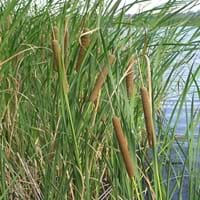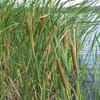Life Span
Perennial
Perennial
Type
Aquatics
Flowering Plants, Fruits, Trees
Origin
North America, United States, Northeastern United States, Mid-Atlantic United States, Southeastern United States, North-Central United States, Central United States, Western United States, California, Canada
Central America, Europe, North America
Types
Not Available
Not Available
Habitat
Bog Garden, Ponds
Hedge, Scrubs, Woods
USDA Hardiness Zone
3-10
4-8
AHS Heat Zone
10-1
Not Available
Sunset Zone
21,22
Not Available
Habit
Thicket/Colonizing
Not Available
Flower Color
Light Yellow, Light Green
White
Flower Color Modifier
Not Available
Not Available
Leaf Color in Spring
Green
Dark Green
Leaf Color in Summer
Green
Green
Leaf Color in Fall
Green
Brown, Green, Light Yellow
Leaf Color in Winter
Not Available
Not Available
Leaf Shape
Flat, Narrow
Oblong
Plant Season
Summer, Fall
Summer
Sunlight
Full Sun, Partial Sun
Full Sun, Partial shade
Type of Soil
Loam, Sand
Loamy
The pH of Soil
Acidic, Neutral, Alkaline
Neutral
Soil Drainage
Poorly Drained
Well drained
Bloom Time
Early Summer, Summer
Fall, Summer
Tolerances
Wet Site
Drought
Where to Plant?
Ground
Ground
How to Plant?
Divison, Seedlings
Grafting, Seedlings, Transplanting
Plant Maintenance
Medium
Medium
Watering Requirements
Needs Very high moisture
Medium
In Summer
Lots of watering
Lots of watering
In Spring
Moderate
Moderate
In Winter
Average Water
Average Water
Soil pH
Acidic, Neutral, Alkaline
Neutral
Soil Type
Loam, Sand
Loamy
Soil Drainage Capacity
Poorly Drained
Well drained
Sun Exposure
Full Sun, Partial Sun
Full Sun, Partial shade
Pruning
Remove damaged leaves
Prune when plant is dormant, Remove dead or diseased plant parts
Fertilizers
Nutrient Rich Fertilizer
All-Purpose Liquid Fertilizer
Pests and Diseases
Free of serious pests and diseases
Aphids, Curculio occidentis, Japanese Beetles, Leaf Rollers, Leafminer, Mites, Red blotch, sawflies, Scale, Stink bugs
Plant Tolerance
Drought
Drought
Flower Petal Number
Not Available
Single
Foliage Texture
Coarse
Medium
Foliage Sheen
Glossy
Matte
Attracts
Wildlife
Not Available
Allergy
Mild Allergen
Digestive Problems, Respiratory problems
Aesthetic Uses
Cut Flowers, Wild gardens
Showy Purposes
Beauty Benefits
Not Available
Beautiful Skin
Environmental Uses
Air purification
Food for birds
Medicinal Uses
anticoagulant, Diuretic, Haemostatic, Miscellany
Anthelmintic, Antibacterial, Astringent, Hypnotic, Laxative, Refrigerant
Part of Plant Used
Flowers, Leaves, Root, Seeds, Stem
Fruits
Other Uses
Used as a thickener in soups, Used to make biscuits, Used to produce edible oil, Used to yield a sweet syrup
Edible syrup, Jam, Jelly, Used As Food
Used As Indoor Plant
No
No
Used As Outdoor Plant
Yes
Yes
Garden Design
Dried Flower/Everlasting, Wildflower
Not Available
Botanical Name
TYPHA angustifolia
Malus sylvestris
Common Name
Narrowleaf Cattail, Lesser Reedmace
European crab apple
In Hindi
Narrowleaf Cattail
european crab apple
In German
Schmalblättriger Cattail
Der Holzapfel, Europäischer Wildapfel
In French
Narrowleaf Cattail
Le Boquettier, le Pommier sauvage ou Pommier des bois
In Spanish
Espadaña de hoja estrecha
Malus sylvestris, el Manzano silvestre, manzano silvestre europeo
In Greek
στενόφυλλα Cattail
Ευρωπαϊκή μήλο καβουριών
In Portuguese
Narrowleaf Tifa
Malus sylvestris
In Polish
Wąskolistne Cattail
Jabłoń dzika
In Latin
Cattail glaucescens
european crab apple
Phylum
Magnoliophyta
Magnoliophyta
Class
Liliopsida
Magnoliopsida
Family
Typhaceae
Rosaceae
Clade
Angiosperms, Commelinids, Monocots
Angiosperms, Eudicots, Rosids
Tribe
Not Available
Not Available
Subfamily
Not Available
Not Available
Number of Species
Not Available
Not Available
Importance of Narrowleaf Cattail and European Crab Apple
Want to have the most appropriate plant for your garden? You might want to know the importance of Narrowleaf Cattail and European Crab Apple. Basically, these two plants vary in many aspects. Compare Narrowleaf Cattail and European Crab Apple as they differ in many characteristics such as their life, care, benefits, facts, etc. Every gardener must at least have the slightest clue about the plants he wants to plant in his garden. Compare their benefits, which differ in many ways like facts and uses. The medicinal use of Narrowleaf Cattail is anticoagulant, Diuretic, Haemostatic and Miscellany whereas of European Crab Apple is Anthelmintic, Antibacterial, Astringent, Hypnotic, Laxative and Refrigerant. Narrowleaf Cattail has beauty benefits as follows: Not Available while European Crab Apple has beauty benefits as follows: Not Available.
Compare Facts of Narrowleaf Cattail vs European Crab Apple
How to choose the best garden plant for your garden depending upon its facts? Here garden plant comparison will help you to solve this query. Compare the facts of Narrowleaf Cattail vs European Crab Apple and know which one to choose. As garden plants have benefits and other uses, allergy is also a major drawback of plants for some people. Allergic reactions of Narrowleaf Cattail are Mild Allergen whereas of European Crab Apple have Digestive Problems and Respiratory problems respectively. Having a fruit bearing plant in your garden can be a plus point of your garden. Narrowleaf Cattail has showy fruits and European Crab Apple has showy fruits. Also Narrowleaf Cattail is not flowering and European Crab Apple is flowering. You can compare Narrowleaf Cattail and European Crab Apple facts and facts of other plants too.





